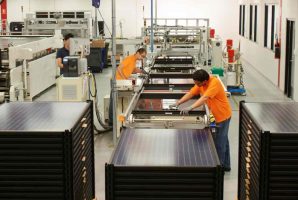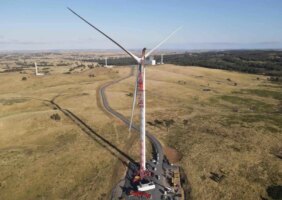Renewable energy developer and takeover target Infigen Energy has reported a significant fall in revenue in the fourth quarter – due to the combined impacts of Covid-19 and the fall in electricity prices – but noted that the Australian Energy Market Operator’s 20-year blueprint creates optimism about the clean energy transition.
Infigen’s quarterly production report shows that despite a 4 per cent increase in output, net revenues in the fourth quarter fell by 26 per cent to $47 million due to the falling prices. Because of this, and despite the competing takeover offers from Spanish giant Iberdrola and UAC, the company will suspend dividend payments to conserve capital.
“The combined forces of lower domestic economic activity and lower global energy prices have contributed to a substantial step down in spot and forward prices for wholesale electricity,” it said in its statement.
This in turn would lead to losses of $15-$20 million from the write down of its value of derivative instruments – effectively bets on future prices that haven’t turned out so well – and a further loss of $17-19 million resulting from interest rate swaps now considered to be ineffective.
On top of that, Infigen has also spent $8 million on fees to bankers and lawyers dealing with the competing takeover bids that has resulted in a series of offers – initially from UAC and then Iberdrola, whose latest offer of $893 million has the approval of the board.
Infigen warns of the conflicting issues in the market. The reduction in economic activity is causing demand to fall and prices to fall, but this and restrictions on movement also means generators are not undergoing expected maintenance. The oversupply in the market is reducing market volatility and flattening prices.
Infigen’s uncontracted revenues are being hit by these changes, and even its contracted revenues are being impacted by new customer supply agreements, and term extensions with existing customers will likely reflect the subdued conditions projected in lower forward electricity prices.
LGC (large scale generation certificates) prices, while continuing to decline from record highs, have rebounded slightly because of the delays being experienced by many projects seeking connection to the grid. Infigen’s expected average LGC contract price in FY21 is $34 per LGC, notably lower than the $56 per LGC expected to be achieved in FY20.
The good news is the medium to longer term future, reflected in the Integrated System Plan released by AEMO last year, and which plots a 20-year path to a grid dominated by renewables, possibly as much as 94 per cent by 2040 under its “step change” scenario.
Infigen says once conditions return to normal, post pandemic, demand will return and higher prices and likely increased volatility will be associated with a higher penetration of renewables.
“AEMO’s updated Integrated System Plan provides a snapshot of the substantial change that is projected to occur in the medium to long-term. As Australia’s aging baseload coal fired fleet inexorably retires, substantial investment in renewable and firming capacity will be required.
“Infigen’s asset portfolio and energy markets capability positions the business to be a significant contributor to this transition. In this environment – characterised by subdued near-term earnings prospects, but significant long-term growth opportunities – a strong and flexible financial position will be central to Infigen’s success.”









